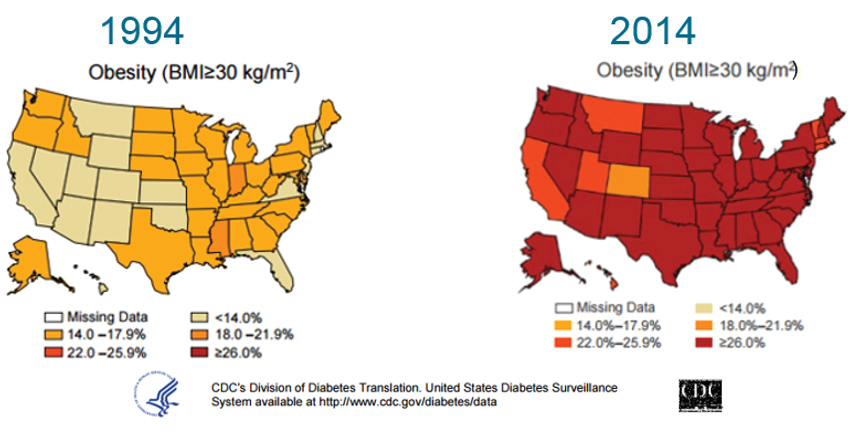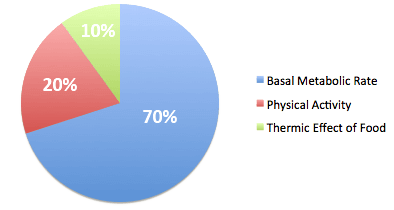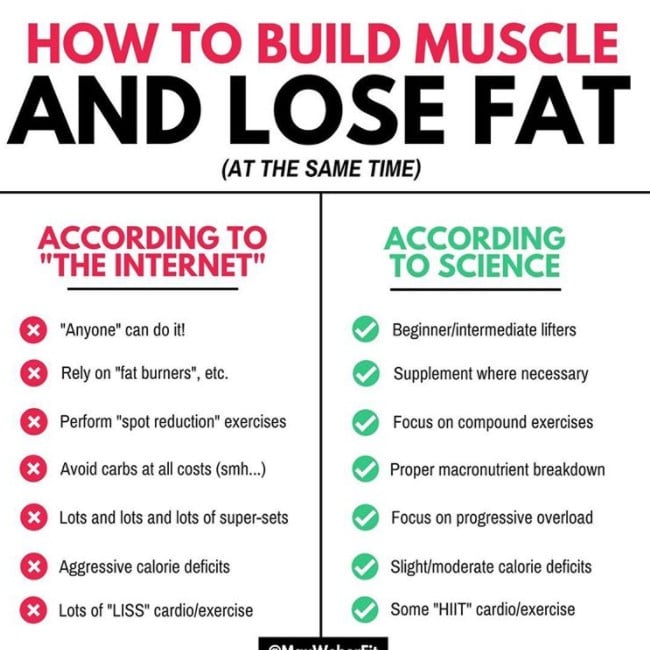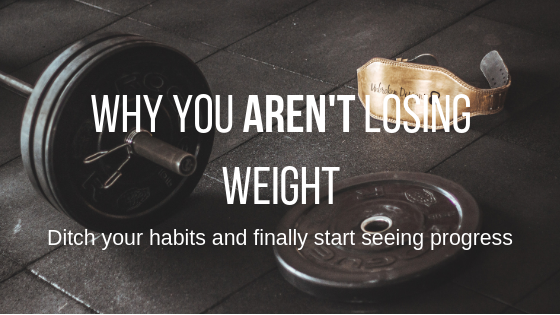Weight loss is the most common goal in America. According to the CDC website, in 2016 the obesity rate in the US reached 39.8%, which equals about 93.3 million US adults. Because of the ever growing prevalence of obesity, there are thousands of products on the market that target adults trying to shed some pounds. With all of these resources, why is it that the obesity rates continue to climb? The truth is, most products on the market do not work, and act as a “quick fix” to a problem that took years to create. Today I want to talk about the real reasons you aren’t losing weight. Weight loss isn’t quick or easy, but it is necessary for those who fall into the obese range. You’re doing it wrong, so let’s start doing it right.

Calorie Intake
Weight loss/gain is directly related to the food you eat. It is all about calories in versus calories expended. To calculate this you must figure out your Total Energy Expenditure. Total Energy Expenditure consists of 3 different variables. The first is resting metabolic rate (RMR or BMR); second is the thermic effect of feeding (TEF); and third is the thermic effect of activity (TEA). “RMR constitutes 60 to 75% of daily energy expenditure and is the energy associated with the maintenance of major body functions. TEF is the cumulative increase in energy expenditure after several meals and constitutes approximately 10% of daily energy expenditure. Most investigators, however, have examined the thermic effect of a single meal test (TEM). TEA is the most variable component of daily energy expenditure and can constitute 15 to 30% of 24-h energy expenditure.” – Med Sci Sports Exerc.

To calculate your own Total Daily Energy Expenditure, you must use an equation. If you are interested in finding out how many calories you burn a day, I found an easy to follow walk-through on the equation on the following site:
https://steelfitusa.com/2018/10/calculate-tdee/
Eating Too Many Calories
The biggest reason why people do not lose weight is because their calories in are greater than their calories out. In today’s world, food is easily accessible in the route of fast food, restaurants, and processed packaged foods. Because Americans are taking in more and more fast food, the average daily calorie intake has risen. Lets look at an example: An average fast food cheeseburger contains about 300-400 calories, but it is unusual for a person to eat just one cheeseburger because they are low in satiety. If an individual eats 2 cheeseburgers for lunch, they have already consumed 800 calories. The average recommended calorie intake amount is around 2000 calories a day. After 1 meal, you have already consumed 40% of your daily calories! With the eating trends of Americans, it is easy to see why obesity rates continue to grow, and weight loss becomes more difficult.
Even if you are eating seemingly “healthy” foods, you can still go over your calorie amount and end up gaining weight. Calories are calories, no matter where they come from. Eating 2000 calories in salads will result in the same weight gain as eating 2000 calories in burgers. Sure, the amount of food will differ, and maybe the nutrients will differ as well, but the main lesson is here is that it is possible to gain weight from overeating “healthy” foods.

The best way to make sure your body is getting what it needs to start your weight loss journey is to calculate your TEE (above) and subtract 500-600 calories from that number. So, if your TEE is 2000 calories, you’d want to eat between 1400-1500 calories to lose weight. Next, it is important that you can accurately track your calories. I suggest downloading MyFitnessPal onto your phone in order to track your calories. In MyFitnessPal you are able to record your calorie goal and track how close you get to it each day by inputting the foods you eat or scanning the bar codes of your foods. They have an extensive library of food and also allow you to build your own recipes. In my opinion, this is the best way to understand what your body needs and to be able to track your progress.
Eating Too Few Calories
Although this option is less likely, it is still a reason that people do not see weight loss. For starters, if you are planning on consuming less than 1200 calories per day, make sure you consult with your physician. On the other side, if your trainer or coach suggests that you intake less than 1200 calories per day… get a new coach or contact your physician before following that prescription.
When you eat too few calories, your body goes into a starvation mode. In this starvation mode it tries to hold on to any calories or remaining fat supply that it has because it is unsure of when it will get fuel from food again. Eating too few calories can damage your metabolism and make your body store fat rather than burn it. Be sure to eat enough for your body to strive in your journey. In order to figure out your caloric range, see the above entry for finding your TEE.
Workout Program Design
So, you’ve been working out for a while now and you aren’t seeing results. Why? Well, there are a couple things you need to reflect on to make sure that you’re working out effectively for your body. According to the Mayo Clinic website, adults should “get at least 150 minutes of moderate aerobic activity or 75 minutes of vigorous aerobic activity a week, or a combination of moderate and vigorous activity. ” When trying to lose weight, it is a great idea to do a mix of both cardio and weight training. A lot of times, people complete ONLY cardio. While this will tire you out and burn calories, it will not help you see fast results. In order to have a successful weight loss journey, you MUST incorporate weight training. According to the Healthline website “Although a weight-training workout doesn’t typically burn as many calories as a cardio workout, it has other important benefits. For example, weight training is more effective than cardio at building muscle, and muscle burns more calories at rest than some other tissues, including fat.”

While on a weight training program, there are a couple things to keep in mind in order to see the best results. The first thing is progressive overload. It is very important that you continue to lift more weight than you previously had (as long as you have proper form and feel comfortable). When you lift more weight than before, you muscles tear, build, and recover; thus building more muscle and burning more calories. If you lift the same weight you always have, you will get the same results you always have. You can’t change your body without changing your effort. The next thing to keep in mind is rep range. When you increase your weight, you’ll want to decrease your reps so that you can focus on a controlled motion with great form. Sticking to about 8-10 reps is great for strength building and fat loss.
The biggest thing to take away from this section is that in order to lose weight, you most have a mix of cardio and weight training. You weight training should be customized to you with periodization and focusing on progressive overload. I recommend finding a coach who can build your program for you based on your goals. (pick me, pick me!)
Lack of Sleep/Too Much Stress
It’s crazy to think that your sleep schedule or your job could be causing you to hold onto weight…but that’s the reality of it. According to recent studies from the Mayo Clinic, lack of sleep “appears to increase hunger and appetite — in particular for calorie-dense foods high in carbohydrates. Sleep duration affects hormones regulating hunger — ghrelin and leptin. Another contributing factor might be that lack of sleep leads to fatigue and results in less physical activity.” It is recommended that adults get between 7-8 hours of sleep per night in order to allow your body to recover and to help maintain a healthy lifestyle.

One of the most interesting topics to me is the affect of stress on a person’s body. When you’ve been put under a lot of stress, your body goes into a fight or flight response to deal with it. This raises a lot of hormone levels and causes you to overeat. According to Pamela Peeke, MD “Because your body thinks you’ve used calories to deal with your stress, even though you haven’t. As a result, it thinks you need to replenish those calories, even though you don’t. ” One of the hormones that is released when you are under stress is cortisol. According to Jason Perry Block, MD, “This can turn your overeating into a habit. Because increased levels of the hormone also help cause higher insulin levels, your blood sugar drops and you crave sugary, fatty foods.” If you are feeling stressed, there are many different supplements that can help with hormone balance. It is important that you find the “why” when it comes to eating while stressed. Are you eating because you’re hungry? Or is it because of an underlying emotion? Stress is inevitable, but it doesn’t have to hinder your progress.
You’re Drinking Your Calories
Soda and Alcohol. Two highly addictive substances. Soda is one of the major reasons why the obesity levels have soared in the US. Soda is basically made up of sugar and carbonated water, and hold no real nutritional value to your body. According to Beverage Marketing Corporation, “the average American drinks 44.7 gallons of soda every year. That’s about 487 cans or 286 bottles or 85 2-liters of that carbonated syrup every year.” The average bottle of soda contains around 150-250 calories. The worst part is that drinking a soda does not make you feel full. All it does is take up calories from your day that should be used on fueling your body with the right foods. Because the soda actually makes you feel more hungry, people tend to overeat when they consume a large amount of soda. Now, lets talk about alcohol. We all know that having one drink is enough to alter your state of mind and talk yourself into a second or third drink. Although vodka and other 80 proof liquors have no carbs or macro nutrients in it, it still contains calories. Every gram of alcohol is equal to 7 calories. A vodka water has about 180 calories, but a margarita can contain up to 700 calories per drink. That right there takes up almost half of your daily calories! Alcohol also slows down the recovery and building of muscle, which will slow progress. Because your body is so focused on getting the alcohol out of it, other processes are slowed down and your metabolism takes a big hit. This will cause fat storage, especially in the abdomen area, and could even promote the loss of muscle mass if it becomes a habit.
You Are. You Just Don’t Know It.
This final reason isn’t really a reason at all. Nowadays everyone is looking for that quick fix, which is unrealistic. Weight loss takes time and effort, especially if you want it to last long term. One of the most frustrating things as a coach is when a client says they’re not losing weight, but their clothes are fitting looser and their strength has improved. If your clothes are baggy on you, you’ve obviously changed your body composition! You’re losing inches, but you are also gaining muscle. Unfortunately our bodies don’t lose all of our body fat and THEN put on muscle mass, it is constantly happening at the same time. If the scale is not moving, it doesn’t mean you aren’t seeing progress. Look at pictures of yourself, your clothes, and your lifts. If you are seeing progress in those areas, chances are you are putting on muscle, which is great!! Eventually you will slow down on the amount of muscle mass gained and start burning more body fat. It happens differently for everyone, but at this point you will see the scale move! Just be sure to not get hung up on numbers and stay true to your journey. If you give up, it puts you right back where you started. Losing weight and keeping it off is a life-long journey. Are you ready to start yours??
